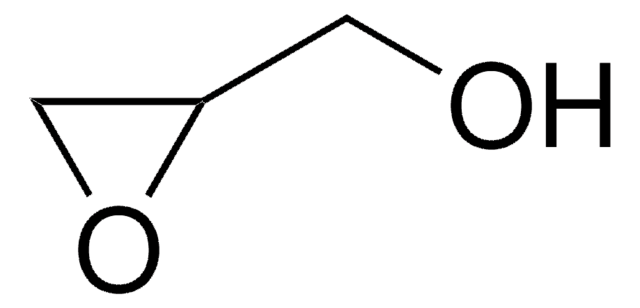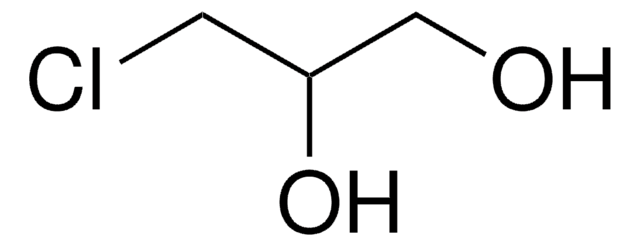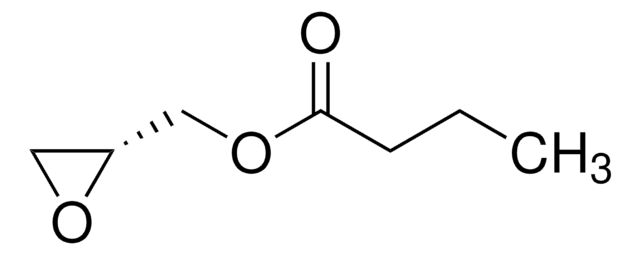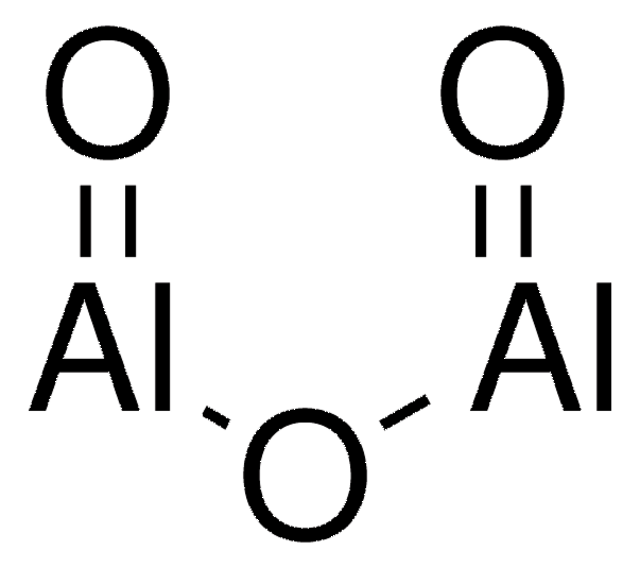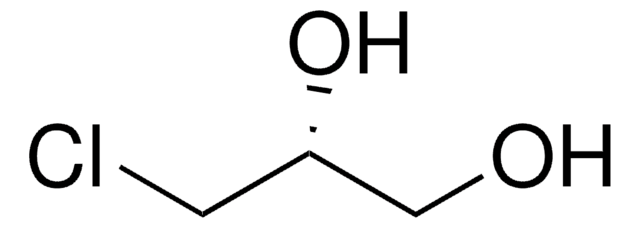Y0001048
Levodropropizine impurity C
European Pharmacopoeia (EP) Reference Standard
Synonyme(s) :
(±)-Glycidol, (±)-Oxirane-2-methanol, 2,3-Epoxy-1-propanol, Glycerolglycide
About This Item
Produits recommandés
Qualité
pharmaceutical primary standard
Densité de vapeur
2.15 (vs air)
Pression de vapeur
0.9 mmHg ( 25 °C)
Famille d'API
levodropropizine
Température d'inflammation spontanée
780 °F
Fabricant/nom de marque
EDQM
Indice de réfraction
n20/D 1.433 (lit.)
pb
61-62 °C/15 mmHg (lit.)
Densité
1.117 g/mL at 25 °C (lit.)
Application(s)
pharmaceutical (small molecule)
Format
neat
Température de stockage
−20°C
Chaîne SMILES
OCC1CO1
InChI
1S/C3H6O2/c4-1-3-2-5-3/h3-4H,1-2H2
Clé InChI
CTKINSOISVBQLD-UHFFFAOYSA-N
Vous recherchez des produits similaires ? Visite Guide de comparaison des produits
Description générale
Application
Conditionnement
Autres remarques
Mention d'avertissement
Danger
Mentions de danger
Classification des risques
Acute Tox. 2 Inhalation - Acute Tox. 4 Dermal - Acute Tox. 4 Oral - Carc. 1B - Eye Irrit. 2 - Muta. 2 - Repr. 1B - Skin Irrit. 2 - STOT SE 3
Organes cibles
Respiratory system
Code de la classe de stockage
6.1A - Combustible acute toxic Cat. 1 and 2 / very toxic hazardous materials
Classe de danger pour l'eau (WGK)
WGK 3
Point d'éclair (°F)
161.6 °F
Point d'éclair (°C)
72 °C
Listes réglementaires
Les listes réglementaires sont principalement fournies pour les produits chimiques. Seules des informations limitées peuvent être fournies ici pour les produits non chimiques. L'absence d'indication signifie qu'aucun des composants n'est répertorié. Il incombe à l'utilisateur de s'assurer de l'utilisation sûre et légale du produit.
EU REACH Annex XVII (Restriction List)
Faites votre choix parmi les versions les plus récentes :
Certificats d'analyse (COA)
It looks like we've run into a problem, but you can still download Certificates of Analysis from our Documents section.
Si vous avez besoin d'assistance, veuillez contacter Service Clients
Déjà en possession de ce produit ?
Retrouvez la documentation relative aux produits que vous avez récemment achetés dans la Bibliothèque de documents.
Notre équipe de scientifiques dispose d'une expérience dans tous les secteurs de la recherche, notamment en sciences de la vie, science des matériaux, synthèse chimique, chromatographie, analyse et dans de nombreux autres domaines..
Contacter notre Service technique